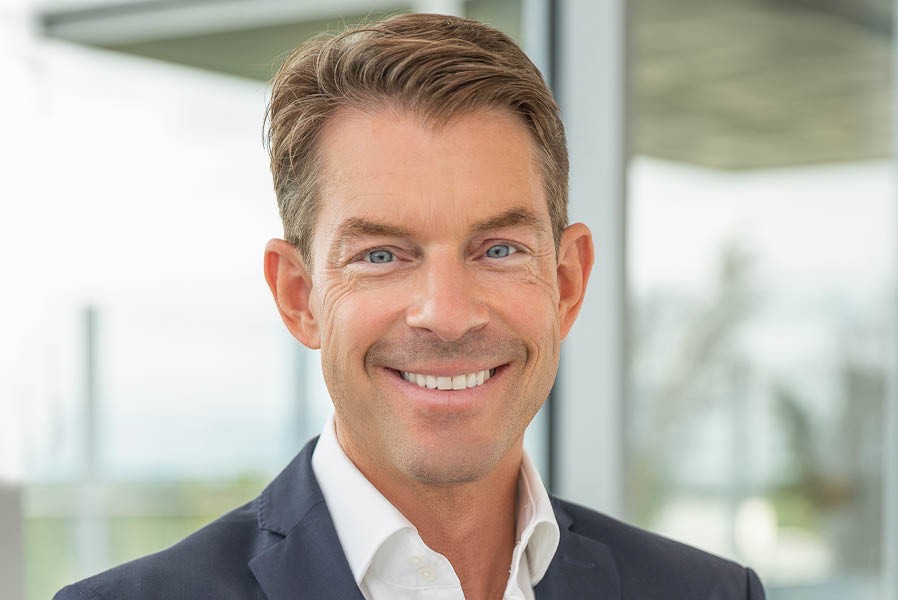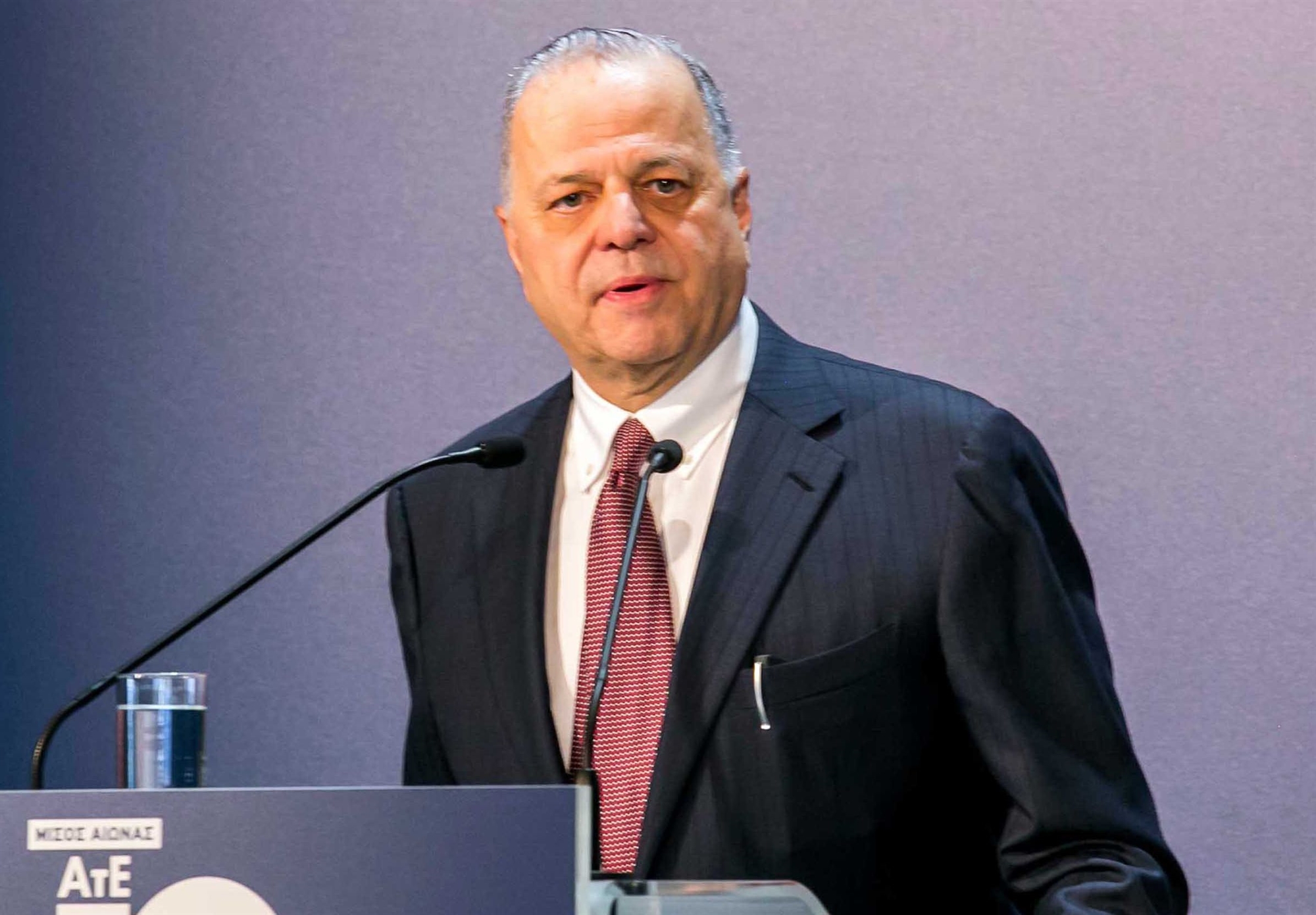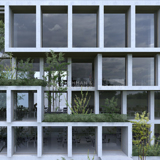Social parameters are becoming more and more important in ESG reporting. The market no longer focuses solely on developing better buildings that enhance the health and well-being of their users, but also takes into account the influence of the building on the neighborhood, incorporating into its functions spaces that are open to the citizens, such as cultural and sports venues.
The following exclusive interview was conducted under the auspices of this year’s RICS World Built Environment Forum 2023, where Dr. Andreas Muschter participated in the panel discussion “How are EU sustainable finance policies impacting the built environment sector?”.
EDGE, an innovative real estate development company, is aiming to contribute to a more sustainable world in which people and the environment are key. Focusing on workspaces, they
develop buildings holistically, leaving the necessary room for creativity and
innovation.
The upcoming European Sustainability Reporting Standards (ESRS) are expected to be highly aligned both with the standards of the International Sustainability Standards Board (ISSB) and with the Global Reporting Initiative (GRI). Do you believe that they will eventually provide investors with uniform and comparable data, or just add an extra layer to an already complicated reporting system?
We recognise the value and importance of comparability and are encouraged by the conversations being held on this topic by key role players. Tremendous progress has been made over the years with respect to sustainability reporting; this is evident in the already significant databank of sustainability information generated and available to investors. There is still however a road to travel to get to a point of uniformity and intercomparable data. Thus, we are on an evolving journey of continuous improvement.
Sustainable finance is a substantial tool to achieve the transition to a low-carbon economy. How are specifications and requirements related to sustainable investments affecting the terms and cost of funding in the real estate sector?
At Edge, we understand the pivotal role sustainable finance plays in driving the transition to a low-carbon economy. Our commitment to building sustainable and ESG-compliant properties aligns with the evolving requirements for sustainable investments.
We've observed that this commitment has positively influenced the terms and cost of funding in the real estate sector. Financial institutions and investors increasingly recognize the long-term value and resilience of sustainable projects, leading to more favorable terms and lower costs for funding. This not only strengthens our ability to deliver cutting-edge, environmentally responsible buildings but also reinforces our position as leaders in sustainable real estate development across Europe.
Do social impact requirements and the new trend of “placemaking” affect your company’s decisions on how to better incorporate your developments to local society’s needs, beyond tenant amenities?
At Edge we believe the world needs better buildings for planet and people. Over the past years we developed our product to deliver the best quality on health and wellbeing for the people that use our buildings day in and day out. We have proven this portfolio wide with WELL Platinum buildings.
What we see now is that the market is not only focusing on delivering the best building in town that enhances individual health and wellbeing but also that of the society.
So, to get back to the question: yes, absolutely. In our recent projects we have placed a strong focus on adding quality to the neighbourhood.
EDGE East Side Berlin enables interaction with the neighbourhood in two ways: Firstly, based, among other things, on around 600 public votes in a competition the artwork "Reversed Dunk" explores the theme of cultural appropriation through an experimental dialogue with the surrounding architecture and the local neighbourhood culture. In an interactive manner, the piece invites visitors, residents, investors, critics, and artists to engage in a metaphysical basketball game, symbolising the reconquest of urban space. Secondly, the two lower floors will also be open to the public and, by appointment, the gastronomy on the top floor can also be used by people who do not work in the building.
One of our most recent Dutch projects, in Utrecht, Oopen offers a big cultural function, has urban sport facilities and also offers access to terraces and a rooftop bar for the people of the city and everyone who wants to visit. Many of these public amenities are based on a lot of research, also done by the municipality where they asked what people really wanted to see back in this building. So that is a direct fit to needs those citizens of Utrecht expressed for that particular location.
But it is not about creating public amenities anymore. It is also about partnerships. In London, a local school co-designed the park and will use the auditorium for their school plays.
For ABN AMRO's new homebase all the plants and trees that needed to be removed before construction started were offered to the citizens of the neighborhood, so they now found a spot in people's back yards.
In EDGE Stadium, we are now hosting the Dutch Philharmonic Orchestra on a weekly basis for their rehearsals. The building is mostly empty from 19:00 onwards, so we were looking for ways to give the building back to the community on hours where its prime function does not have to be an office.
There is always more to do but we feel we are on the right track to deliver more positive impact on society.
Operational carbon and utilities make up a significant amount of a building’s footprint. Does your company rely on Sustainable Facility Management Agreements or any other policies to ensure and maintain your tenants’ commitments towards net-zero buildings? What is, in your opinion, the most effective way to engage tenants?
With Edge’s ambition and track record of building highly sustainable buildings, we are already today able to building very energy efficient buildings, running on renewable energy sources with low to zero operational carbon emissions. Looking at the whole lifecycle of a building, the embodied carbon emissions coming from the production of materials and the construction and renovation of the building form the biggest part of a building’s carbon footprint.
With that being said, tenants play a significant role in achieving a low energy consumption during the use phase of a building. Edge buildings attract those tenants and buyers, who share our ambition and values. Therefore, we often partner up with our stakeholders to bring the sustainable performance of our buildings to an even higher level. Green lease clauses have become a common tool to manifest the shared ambition of the tenants and owners, as many tenants are looking for sustainable office buildings which support their own ESG strategy and ambitions.















